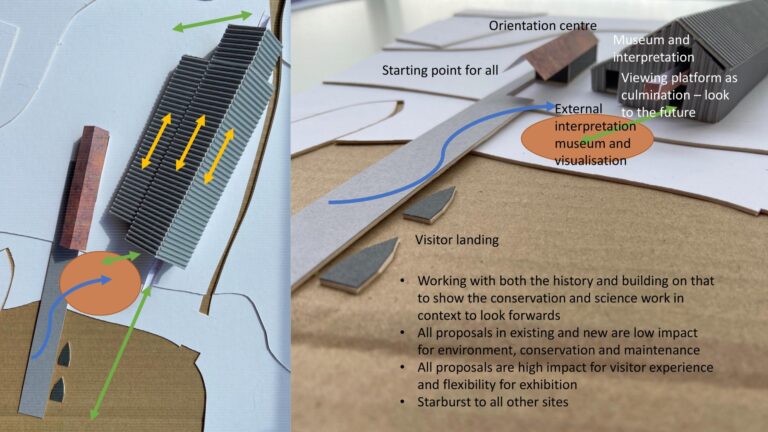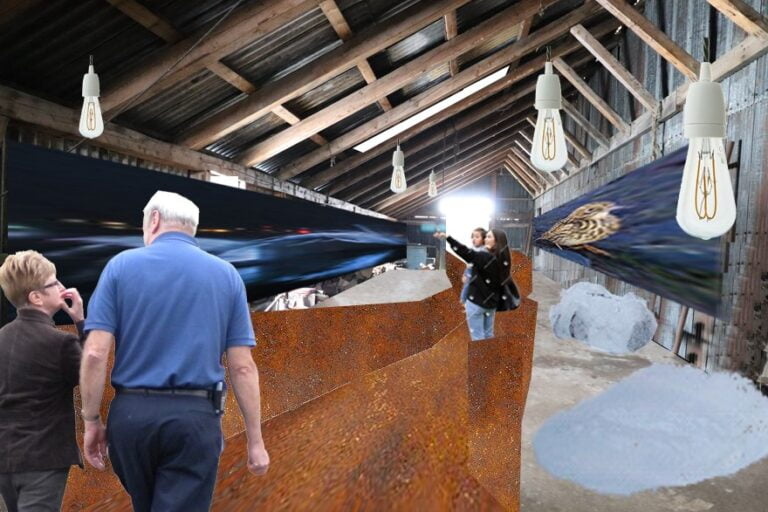Overview
The sub-Antarctic Island of South Georgia sits in one of the most inhospitable areas of the world, surrounded by raging seas. It is ice bound for much of the year and battered by ferocious winds. With a history of exploitation through whaling and sealing leading to decimation of the wildlife populations and near extinctions, conservation of the flora, fauna and historic buildings is now an essential and successful part of the island story.
The landscape and wildlife is recovering with support by a number of agencies working together. These include the Dundee-based South Georgian Heritage Trust (SGHT). SGHT and the Centre for Remote Environments (CRE) at The University of Dundee. Together we developed proposals for a Science and Arts Exhibition showcase in the former Whaling Store. This adds a layer of history to the former whaling station’s Main Store building to showcase:
- the change and successes of conservation work that has been undertaken so far,
- science and conservation projects that are ongoing by CRE, SGHT and The British Antarctic Survey (BAS) and
- a look at what the future holds
This was a particularly wonderful site to visit, and a demanding project – being fabulous to bring all the strong constraints together into a proposal. The weather is very harsh, energy generation opportunities are minimal, the historic building fabric of great value, but in poor condition and the installation requires particular atmospheric conditions. Creating a space that intertwines all of these was a special opportunity – not only because of the beauty of the site and brief, but also the strong historic links through whaling and polar research to our base, here in Dundee.
The former whaling station of Grytviken receives 10,000 cruise ship visitors annually, with this projected to double in the coming years. Creating a sensitive installation based in a historic building combines the layers of history of the past, present and future. Conservation successes include a rat eradication project to remove the small invaders which were imported on whaling ships and this has enabled the local pipit population to grow again.
The island has no permanent human population and is inhabited by fur seals, elephant seals and several hundred thousand penguins.
South Georgia Heritage Trust
The Centre for Remote Environments
The British Antarctic Survey
The South Georgia and the South Sandwich Islands Government
More details
Team
Team members involved: Kirsty Maguire
Engineer: David Narro Associates
Services: Max Fordham
Photography: Kirsty Maguire












